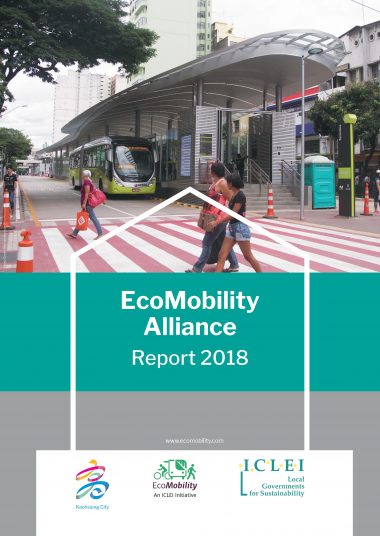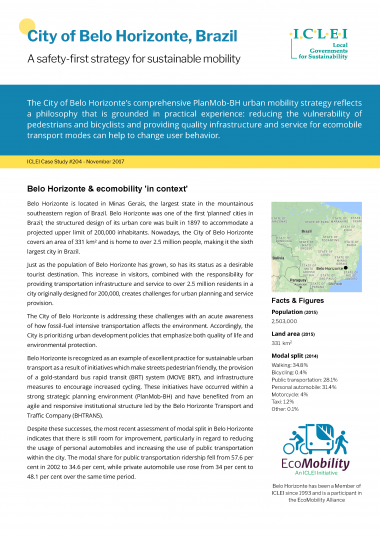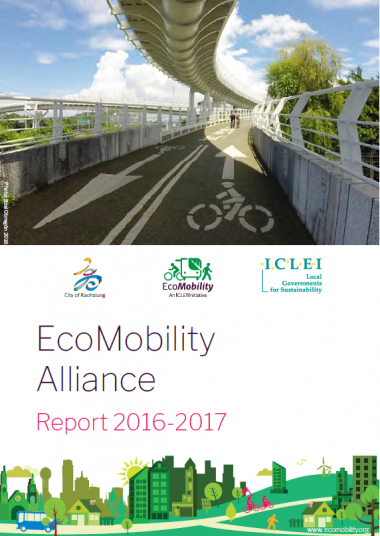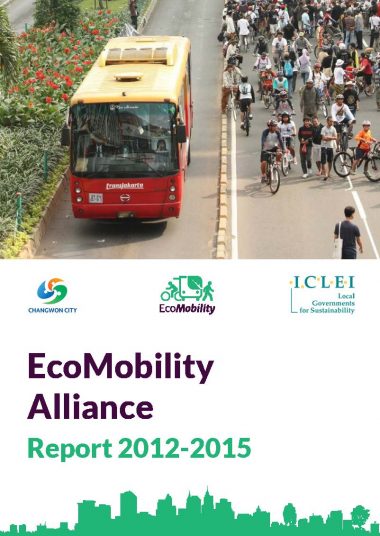Belo Horizonte, the capital city of Brazil’s southeastern state of Minas Gerais, links mobility and urban development goals. Sustainable transport is featured in the 2030 Strategic Plan (Plano Estratégico BH2030), the city’s urban development plan. In 2013, Belo Horizonte became the first city in Brazil to introduce a sustainable urban mobility plan (Plano de Modilidade Urbano de Belo Horizonte, Plan-BH), including elements such as active mobility, public transport, urban logistics, and universal access. Led by the Belo Horizonte Transport and Traffic Company (BHTRANS), various programs and actions are implemented to encourage ecomobility and restrain private car ownership.
Integrating walking and public transport for inclusivity
A world-class bus rapid transit system (MOVE) began operation in 2013, stimulated by the MobiCentro project. The goal of this project is to enhance walkability around the Bus Rapid Transit (BRT) corridors and the connecting roadways through low-cost solutions. Through adjustments in the traffic signal programming, pedestrians now have shorter waiting time and longer crossing time. Changes road design, traffic flow and improvement in inter-neighborhood linkages reduced walking distances and increased pedestrian roadways. Also, sidewalks near the intersections have been equipped with alarmed traffic lights to aid safer crossing for the visually impaired and the elderly. Positive impacts such as the following have been observed *:
- Air quality improved with the reduction in carbon dioxide emissions (41 percent), nitrous oxide (39 percent), volatile organic compounds (68 percent) and inhalable particles (32 percent)
- Improving operational speed of BHTANS’ buses from 9 to 17 kilometer/ hour (km/h) and regular municipal buses from 11 to 21km/h through improvements in infrastructure and route-planning
- Faster commute times on public transport contributed to a 73 percent increase in passengers served and an 85 percent increase in the number of bus passengers served (from 84,000 passengers attended per hour to 155,000 passengers served per hour since 2014 to 2017)
Belo Horizonte faces challenges concerning pedestrian safety, so it launched the Vida no Trânsito (Life in Transit) project to reduce accidents caused by irresponsible driving and promote a healthy and peaceful culture while in transit. Efforts have reduced traffic accidents by 18 percent. The city is also interested in increasing the use of bicycles, and is expanding the existing cycling path from 89km to 411km by 2020.
* Barriga, R (2018). Fact sheet on Transit Oriented Development. Retrieved from https://www.urban- pathways.org/uploads/4/8/9/5/48950199/factsheet_up_tod.pdf




